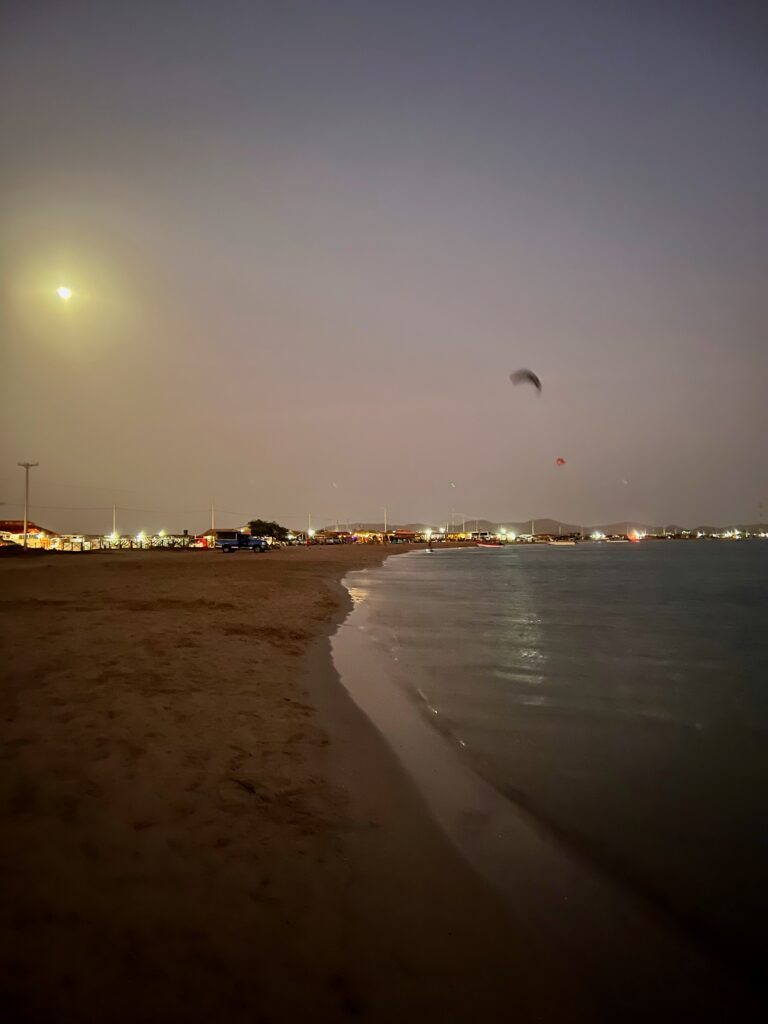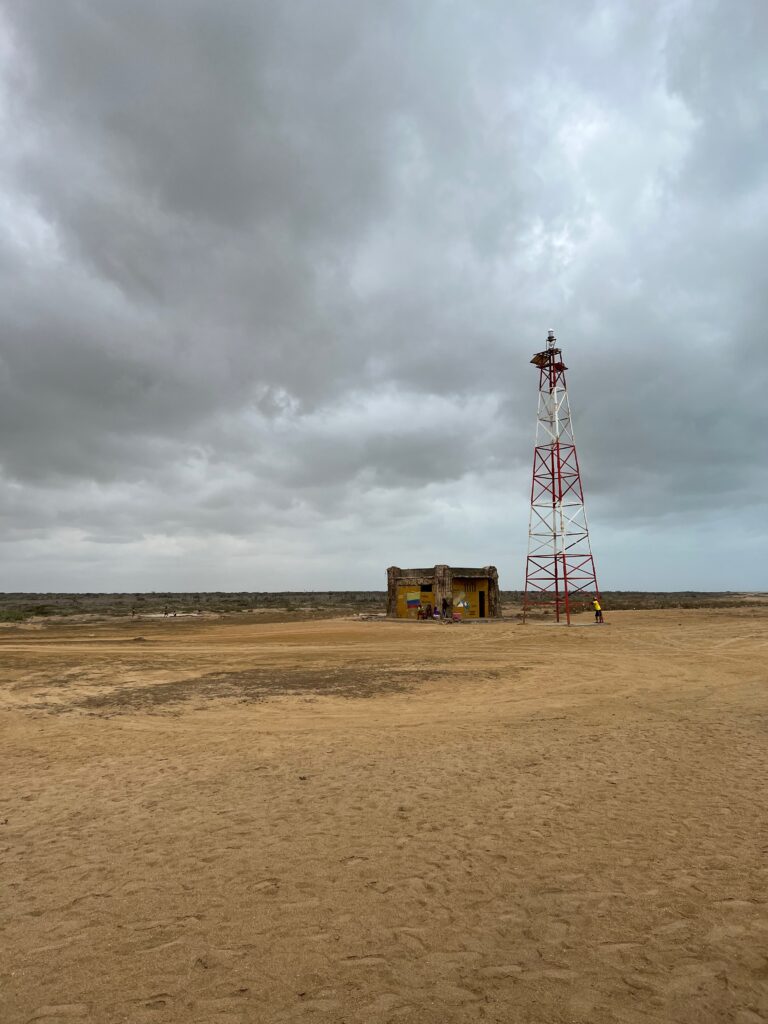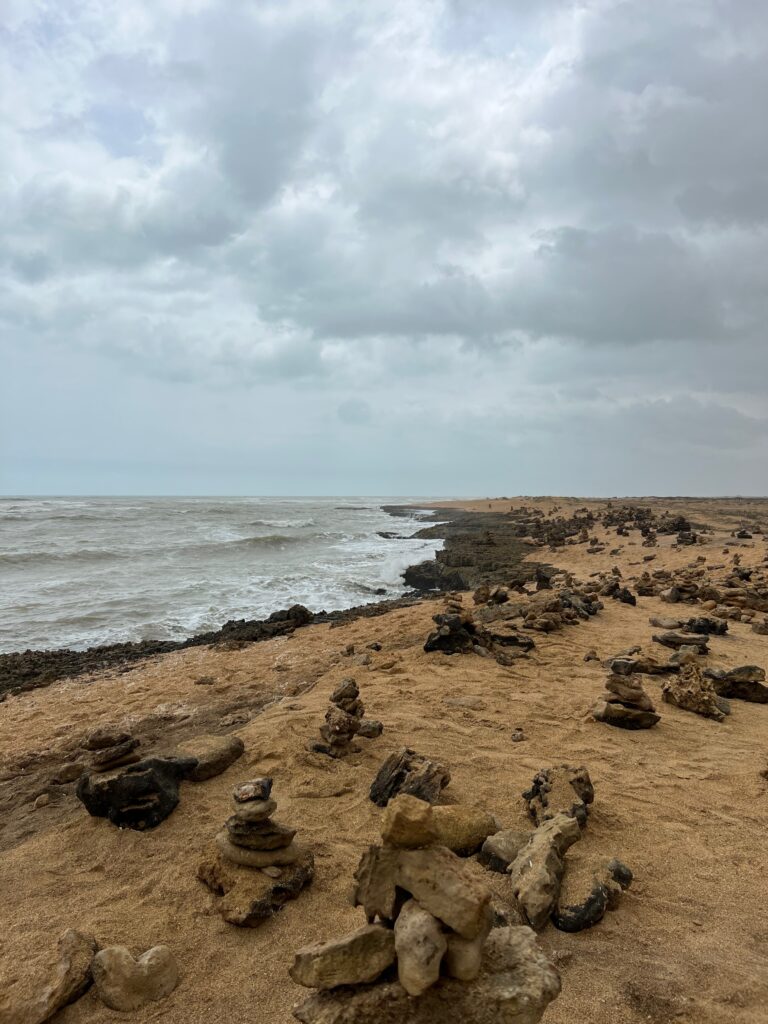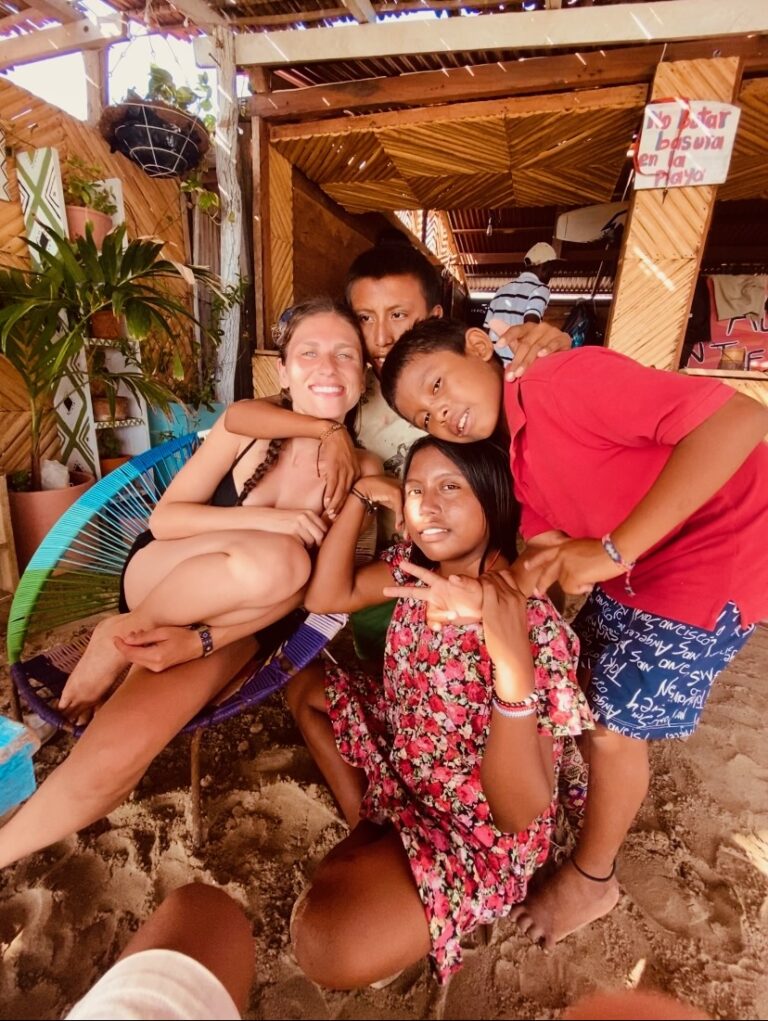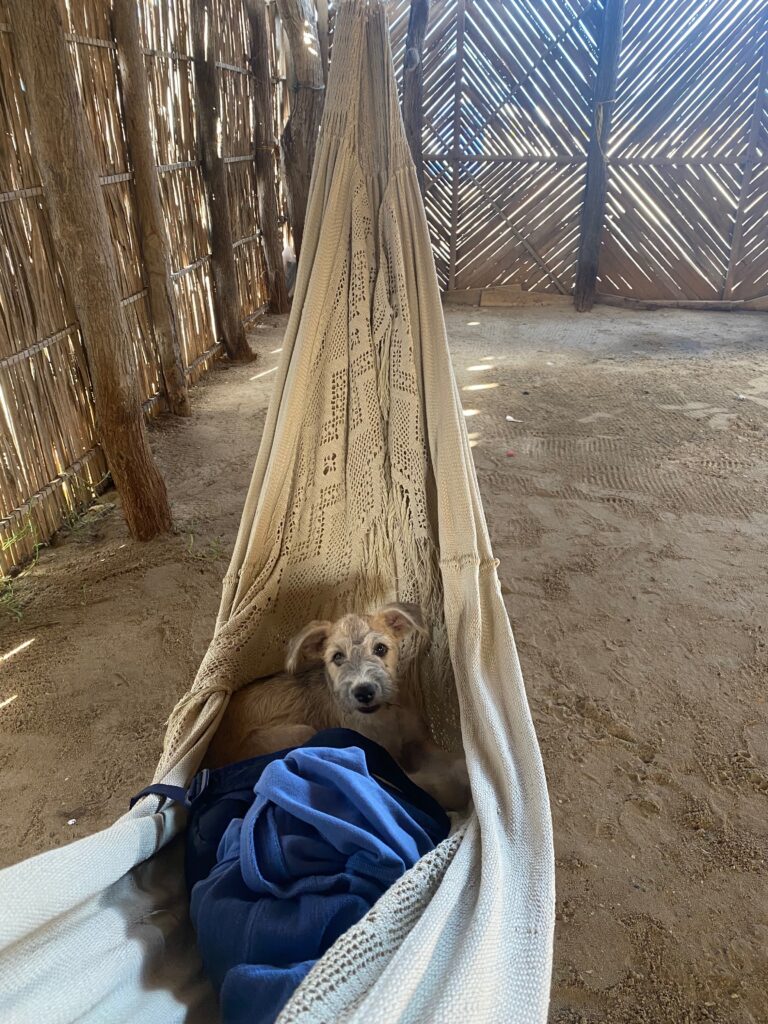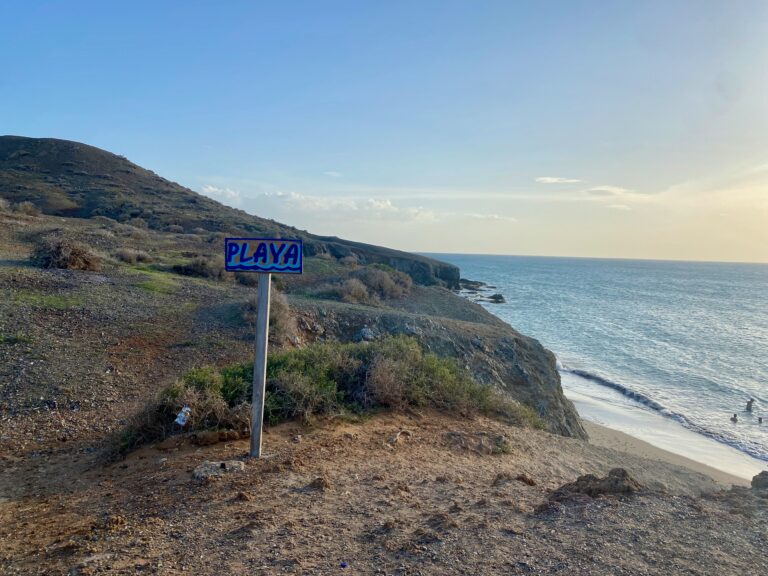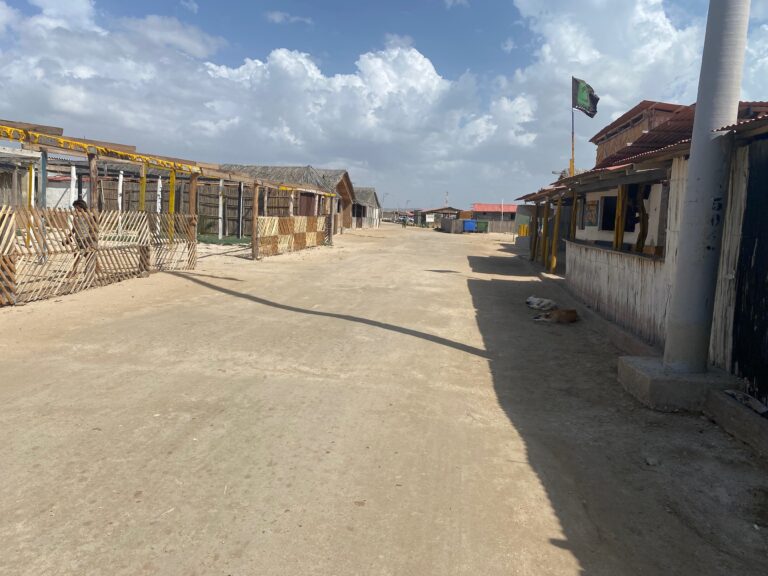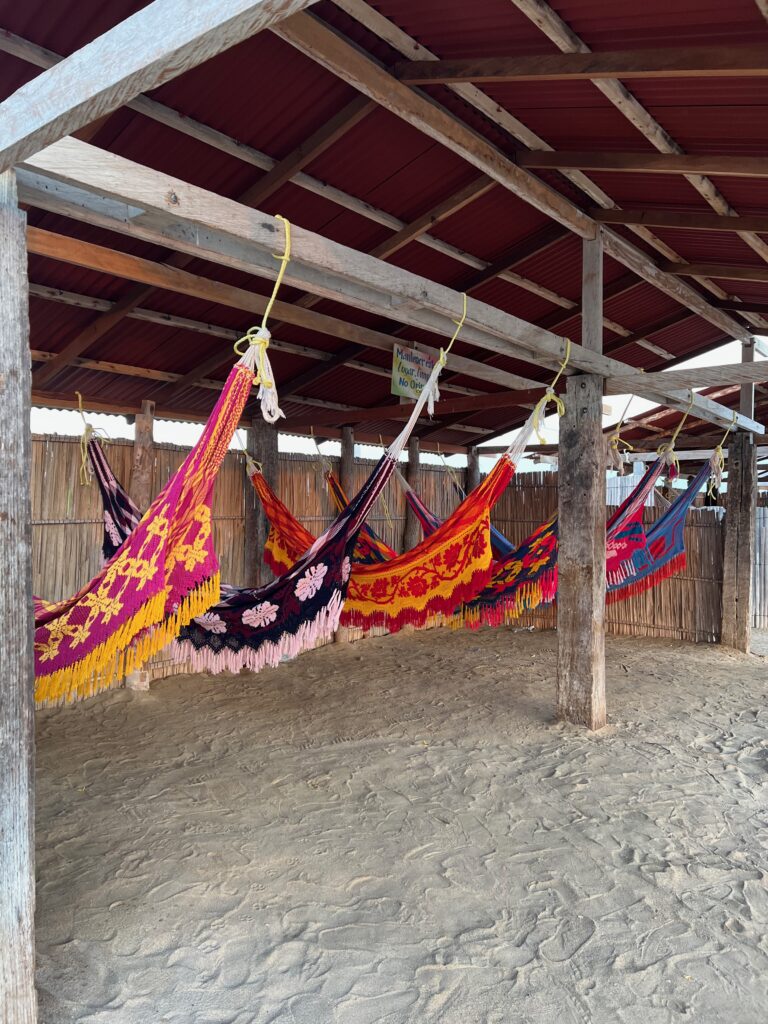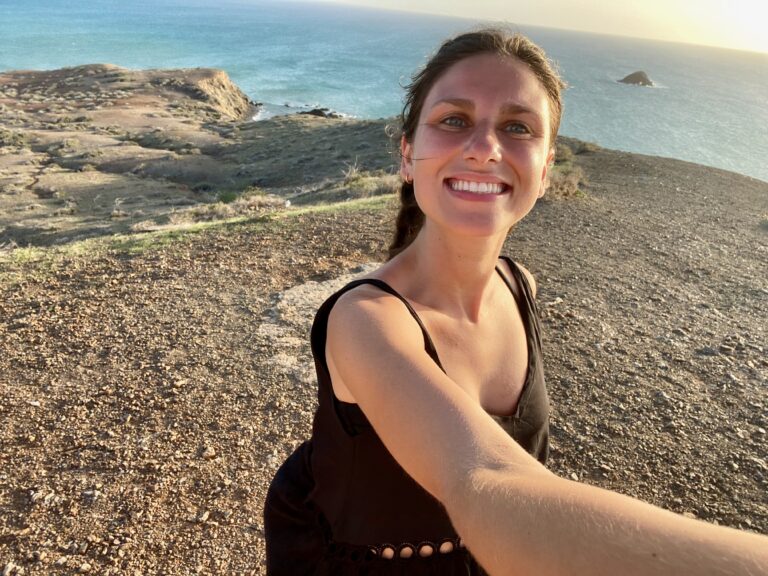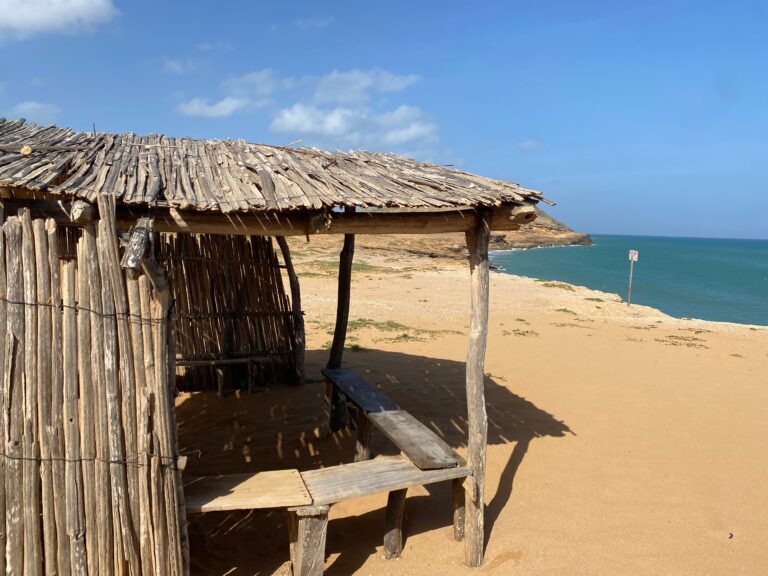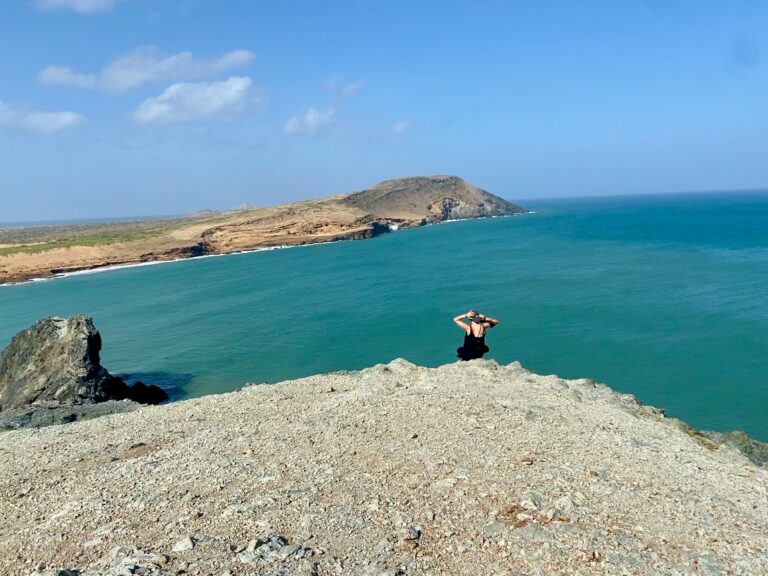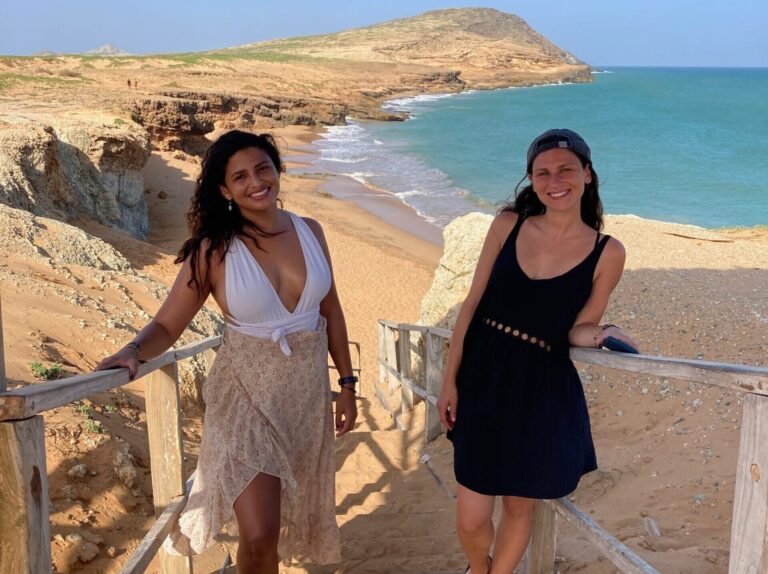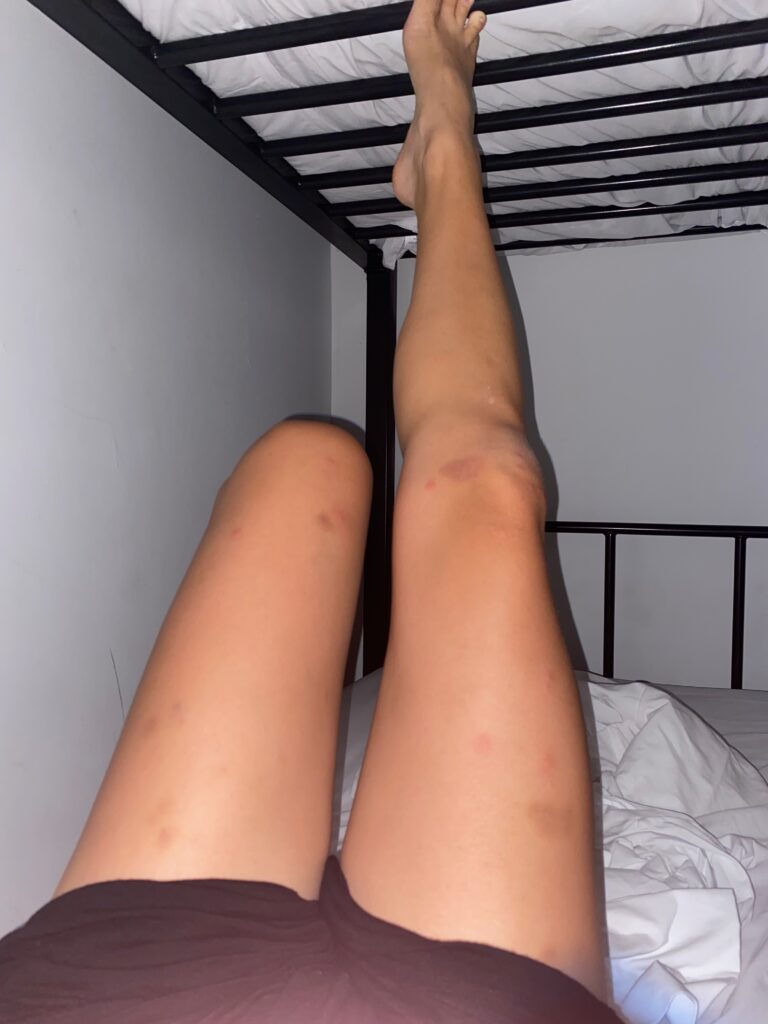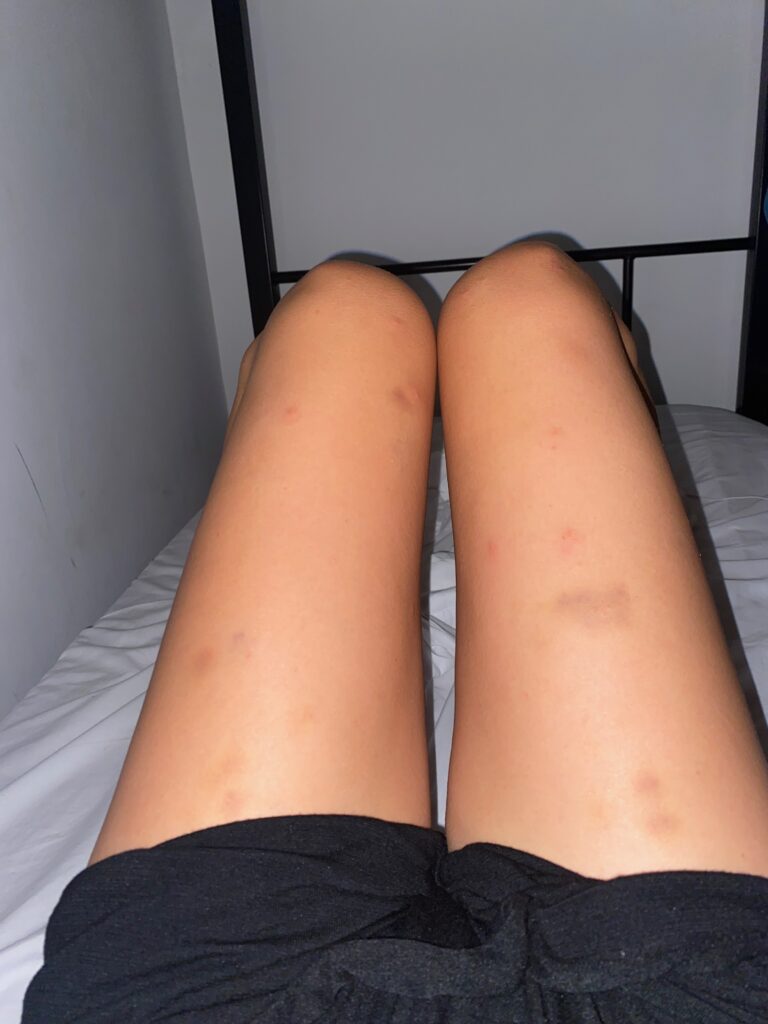Cabo de la vela
Where the desert meets the ocean. This may actually be my favorite landscape. A place where the turquoise water contrasts the golden sand. The indigenous live amongst the tourists. The wind continuously sweeps away footprints, as if it’s uncharted territory even if it’s not. The hammocks swing and kite surfers fly.
I’ve been to Cabo de la Vela twice. On my first visit, I went with a 2 day tour and ended up staying there for 6 days following an impromptu kite surfing lesson where I very much fell in love with the sport. I then returned later in the year to kite surf again. Both visits were great but unexpectedly different. Cabo de la Vela is a special place but there is a lot you should know before you go.
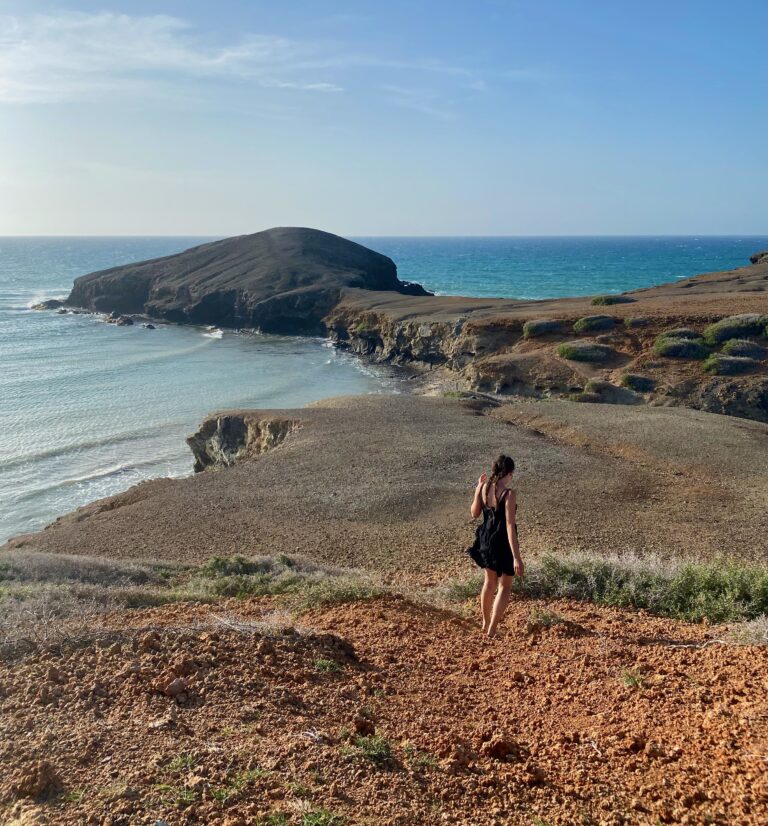
WHAT TO EXPECT
Scenery: You have to see it to believe it. The juxtaposition between the bone dry sand and the vast Atlantic ocean, the beauty is undeniable.
Comfort: Cabo de la Vela is amazing, but let me stress, luxury doesn’t exist. Money can’t buy even basic luxuries such as hot water or reliable wifi. But if you can rough it a bit, it’s so worth it.
Wifi: Claro service reaches the desert. That being said, there was once a huge signal problem while I was there. But when it’s up and running, Claro does the job. During the time that Claro was down, me and two german guys went to maybe every single accommodation and restaurant, begging to use their wifi – without success. It was maybe a power grid issue, I’m not really sure, but I wouldn’t consider it a good place for digital nomads.
Kite and Indigenous: Capitalizing on the elements, kite surfing brings cashflow into the desert and it’s really nice to see the businesses that have been built by the indigenous community. Many of the kids help out around the kite schools and are really looked after well. Not to mention these are some of the most talented kite surfers in the world.
Poverty: The cities in La Guajira that you pass to reach Cabo de la Vela, such as Riohacha and Uribia, are poor, the indigenous in the desert are a different type of poor. Something that I’ve learned while traveling is that money means a lot less than we give it credit for. Be prepared before you go that you will see large families, living in small shacks, wearing essentially rags. Are they happy? Are their basic daily needs met? Would they change positions with you or me if they had the opportunity? I’m not really sure, but that’s part of traveling, no? To see a different way of life without necessarily comparing.
The Local Kids: During the day you won’t go far without seeing the children working selling bags, bracelets, and begging. This is why it’s recommended to bring extra food to share with them instead of giving money as it encourages families to have their children work instead of attending school. Slightly tangential – but it’s a tough place to be as an outsider because who am I to place the importance of education on someone else’s culture. If anyone has some good thoughts regarding this, I’d love to hear it. But at night, the kids tend to hang around the beach. Get to know them, they are great. Just be careful with your phone because they will for sure use all of your data to watch youtube videos and play games if given the chance. But overall, they are so fun and really enjoy meeting the visitors.
Garbage: Not so much in Cabo de la Vela or Punta Gallinas, but on the route between Riohacha and Uribia, it becomes quite obvious that there is a trash problem. In some areas, plastic bags cling to every single cactus in sight, creating a sea of plastic. Someone told me it’s because fuel costs too much to get trucks out to the desert consistently so most of the trash is burned. With the wind, it scatters. This has not been fact checked, but regardless of the reasoning, it’s a bit unsettling to see. I realized upon my second visit that because of the overwhelming beauty of Cabo de la Vela, I completely forgot about the trash filled journey. I hope there will be a solution in the near future to clean up the area.
Running water: If you’re staying in a hammock or chinchurro (a larger more sturdy hammock) on the beach, beware of the toilets. They are not nice, especially the ones in Guajira Kite. Every night we would go on a hunt for toilets with seats and maybe even running water to wash our hands if lucky. I washed my face and brushed my teeth with a water bottle. If you’re staying in a more proper hostel though, like Pujuru, you should be able to have a shower during certain hours of the day.
Noise: If you’re staying on the beach, especially near a bar or restaurant, expect it to be noisy. They play loud music until at least midnight. Then in the morning, you’ll wake up early with the sun, the kids, and the dogs. Staying on the beach is a wild experience.
Food: Restaurants serve a limited menu of edible food at a premium price. I stuck with the pizza, a staple in these remote destinations. It’s a lot of food, and. the price isn’t too bad, but the kicker, it may take more than an hour to prepare. So plan ahead and put in your order early or make sure you’re well stocked with snacks. There are also little tiendas that sell snacks and beverages and an ice cream guy who comes around.
Donations: As previously mentioned sharing snacks with the kids is a good way to engage with them without making monetary transactions that can support the child labor culture.
Health: Every time I came back from Cabo de la Vela, I was a mess. Between kite surfing battle wounds (see photos at bottom of the page), mosquito bites, raw chapped lips, and blistering sun burns, it wasn’t pretty. But still worth it. Just come prepared .
Tours
Do you need to take a tour? For the first visit, I highly recommend. It will save you a lot of headache. Negotiating and arranging transportation isn’t exactly easy and requires a few steps.
When weather permits, you can take a three day, two night tour to Punta Gallinas. This is the most northern tip of South America, and worth the visit if you’re already out there. When it rains, the “roads” which are essentially tracks in the sand become impossible to navigate, so we weren’t able to do it on my first trip. When I went the second time, I arranged my own transportation from Riohacha airport to Cabo de la Vela, and then I found a 1 night, 2 day tour to Punta Gallinas after spending a few days kite surfing in Cabo de la Vela. The landscape in Punta Gallinas is similar to what you find in Cabo de la Vela, but without crowds. It also includes sand dune boarding.
All of the tours are essentially the same. When I went to Punta Gallinas, we had the BEST driver. I was the first pick up so I sat in the passenger seat. He gave me bags of candy and crackers. Instead of being annoyed at the “road blocks” of indigenous people asking for money or food to pass, we gave out the treats like it was Halloween. Smiles all around. Though I did feel like our car was going to break down at any point. With a thud to the dashboard, a restart to the engine, we kept trucking along. Do some research if you’d like but I imagine they are all more or less the same and the driver is luck of the draw.
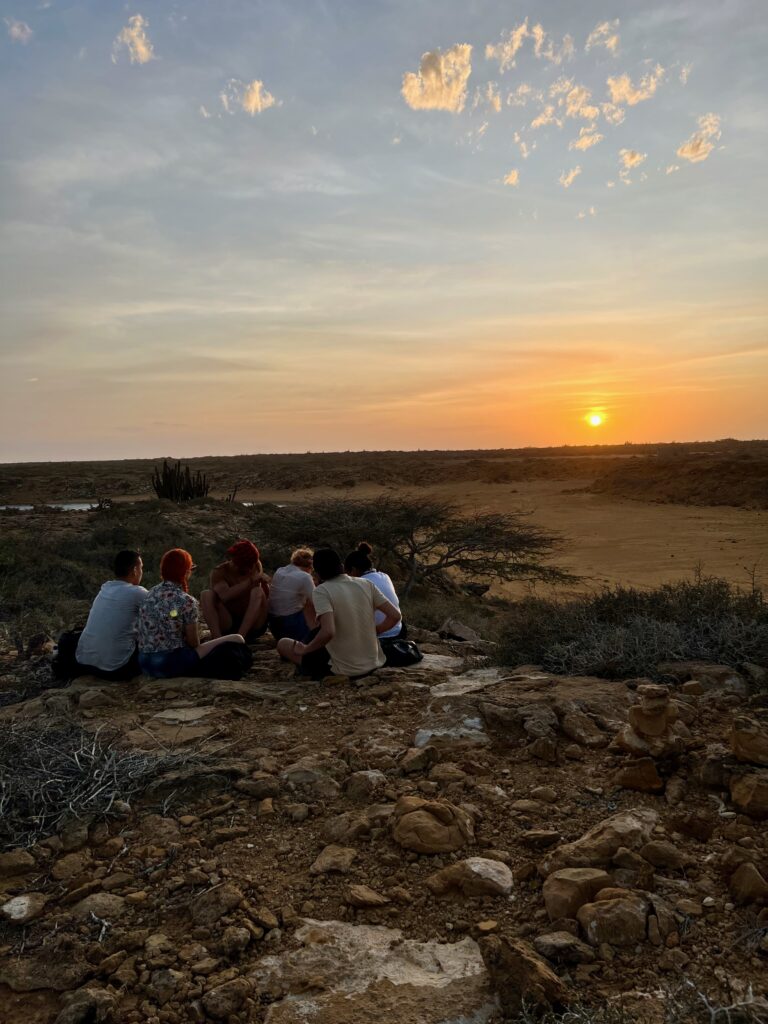
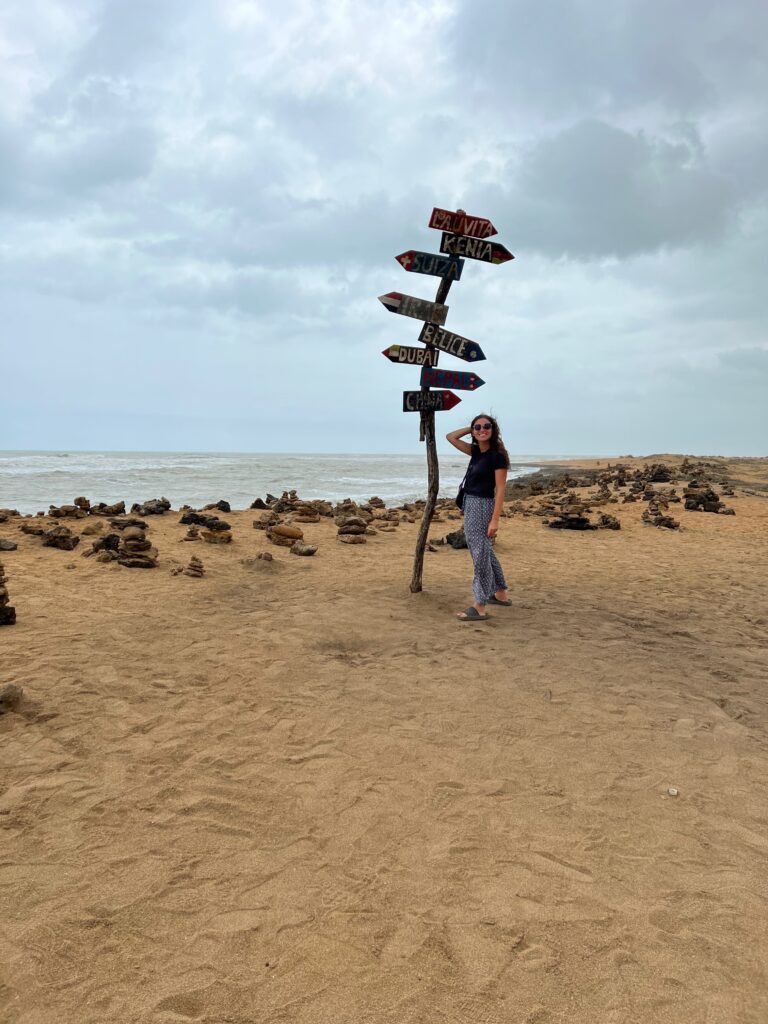
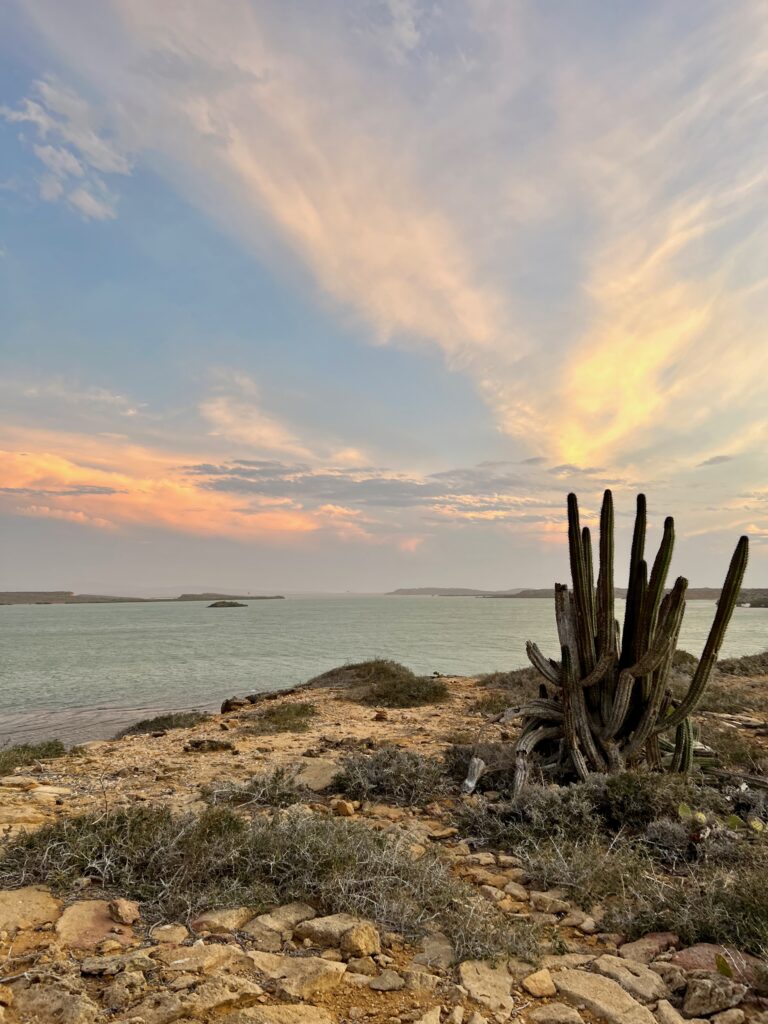
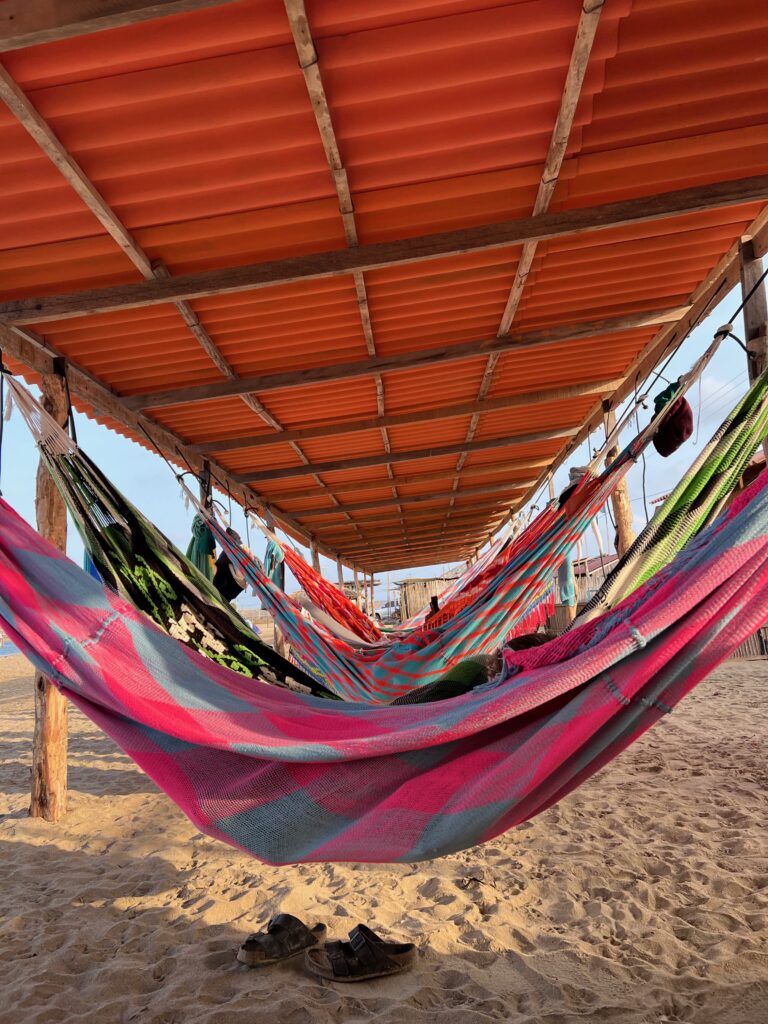
How to get there
The closest airport is Riohacha. I’ve flown from Medellín and it was quick, cheap, and easy. I would recommend setting up a transfer before hand. From there you are shuffled off to Uribia and then to Cabo de la Vela.
Arriving by land: There is a bus that connects Santa Marta to Palomino. and then from Palomino there is a bus to Riohacha where you can then get the transfer to Uribia and so on. A lot is involved but you’ll get there eventually. When I took the tour the first time, we paid extra for them to pick us up from our hostel in Palomino and they arranged the rest of the transfers with the tour. This is definitely the easiest solution.
Leaving the desert: There is a colectivo that leaves every morning. It leaves early. I believe around 6 or 7am. It’s possible that you can get another transfer out but it depends on availability and demand.
Pricing: I find that the north of Colombia in general requires a bit more savvy. They might try to rip you off. Ask around to get the best prices, bring extra cash, but also try to stand your ground if you feel like you’re getting taken advantage of. At the end of the day, if you’re fighting over a few dollars, with such a long journey, it may be worth it to keep things moving. Also, once I happened upon a direct transfer from Riohacha to Santa Marta for a bit extra and that was an offer I surely did not turn down. The closest ATM to Cabo de la Vela is in Uribia, so come prepared.
I met a couple in Punta Gallinas who arrived by motor bike, it took them 8 hours from Cabo de la Vela including two rescues from kind locals. Even navigating the desert by car could be challenging. I’d proceed with caution if you’re going to go this route.
Since there is so much to explore within Cabo de la Vela, which is not all walkable, the tour just makes sense since they set up accommodation and take you to the hot spots (salt flats, beaches, sunset point, etc). It’s also nice to meet other tourists. The town itself is very small. Essentially just one main road along the beach.
Where to Stay
Pujuru Hostel – it’s basic but after spending a few days on a hammock on the beach, it’s a freakin palace. Running water and electricity for at least a few hours/day, a shelter from the sun, wind, dogs, and children. This is where many of the tours stay so there is typically some company if you’re staying in hammocks (as any hostel, be prepared with earplugs). For an up charge, you can also have a private room. I was always shocked with how much they were charging for a private room, but supply and demand is real. Lockers are available for all guests, just bring your own padlock.
There are a few other accommodations that seemed decent such as Arco Iris and El Caracol, but I think Pujuru is the best located one, especially if you’re kite surfing.
A chinchurro or hammock on the beach is always an option. I was happy to have the experience. Waking up to the view of the water was incredible, but I think I’ll stay at Pujuru again when I go back.
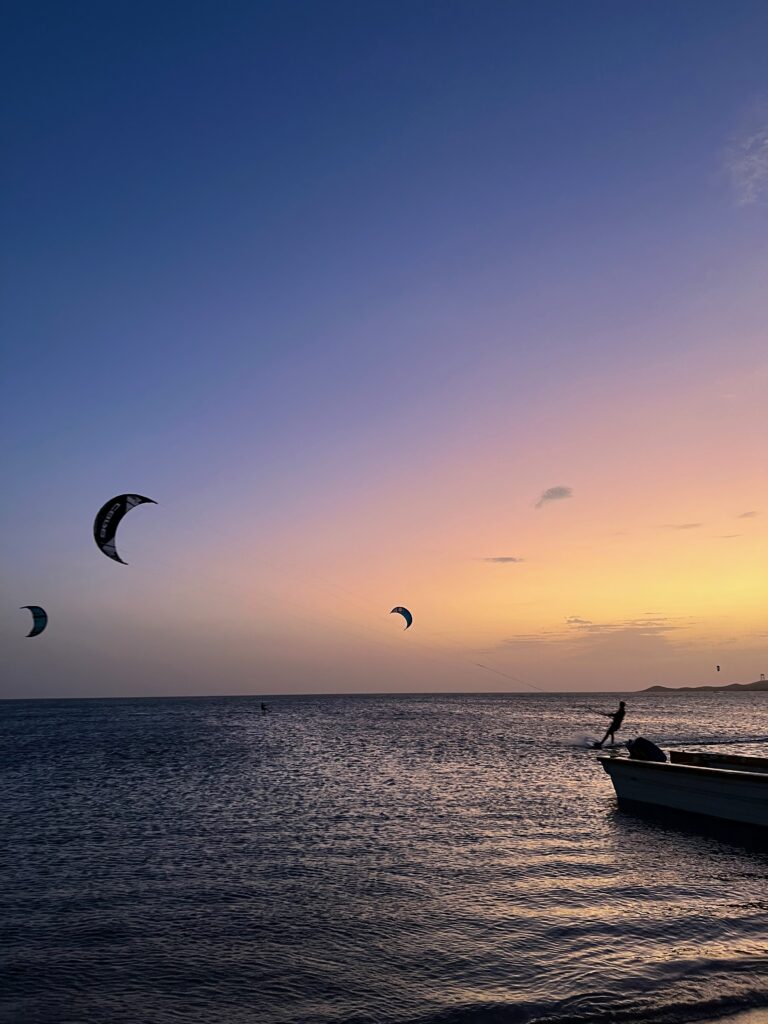
What to bring
Snacks and water: For yourself and to share. There is something that will become very evident, the indigenous have integrated their livelihood amongst tourism. As mentioned before, mainly kids will stand next to the road, hold a makeshift road block, and request a donation to let you through. Some drivers will drive right across, yanking the string from the kid’s hand while others will stop and give them something little. After sunset, the kids come hang out around the restaurants and hammocks on the beach. It’s nice to be able to share some snacks with them.
Clothes: nothing fancy. A bathing suit, clean clothes to sleep in, and a cover up/beach clothes is all you really need.
Chargers: Portable chargers could be handy as electricity can be limited to certain hours.
Cash: The closest ATM is in Uribia. I recommend brining plenty of cash from wherever you’re coming from. The first time I was there, Ompi at Cabo Kite was the only guy in the desert with a credit card machine and he became my personal ATM as I wasn’t expecting to stay so long. When I went back the second time, a few other places seemed to accept card as well, for a fee of course.
Toiletries: Besides the obvious, also bring a towel, toilet paper, and hand sanitizer.
When to Go
Maybe more appropriately: When not to go
- Based off my experience, I would go as far as to say to avoid any holiday or long weekend. I made the mistake once of going during Semana Santa. This weekend brought people into the desert by the busload, truckload, cattle car-load, literally any type of vehicle you can think of. With already rudimentary infrastructure, this was a recipe for disaster. As a result, the beach was littered with garbage, music blasted from speakers at all hours, accommodations were near impossible to find last minute, and the water was overcrowded by bathers and beginner kite surfers causing dangerous conditions. Go during the week, a non holiday week, for a much more enjoyable experience.
- Wet season (September through December) if you’re trying to go to Punta Gallinas as the roads may be too wet to make the journey. The positive – when I went in September there were no crowds. At one point, I swear I knew everyone in the small town as it was just me and a group of kite surfers from Medellín with a few small tours coming in and out daily. It was magical. I’m unsure if this could be attributed to off-season or COVID.
Kite Surfing
Kite surf spots are always fun. There really is a distinct culture. If I were to describe it, I would call it chilled surfer vibe meets aprés ski? Think music, beers, and a rush to the water when the wind is pumping. There’s camaraderie as it’s always helpful for launching and landing to have a partner, people look out and support each other, but at the end of the day, it’s a solo sport so if you have a rough day, no harm no foul.
Is Cabo de la Vela a good place to learn? This is a hard question that I pose to myself. The conditions – amazing. Warm flat water with consistent winds. You can’t beat it. If you’re going to pick a school, I can recommend Ompi at Cabo Kite. Another spot that caught my interest was Tawi Kite. They are a hostel and kite school, walkable from town but a bit outside the main drag. They have great reviews on google. A school that I highly discourage learning at is Guajira Kite. Avoid at all cost! They are cheaper for good reason. They have their own “method” and it’s just a lot of smoke and mirrors for bad instructors.
Why Cabo de la Vela may NOT be the best place to learn? It comes down to technology. Ompi taught me – he’s fun. His life is kite and it shows. He’s probably one of the most talented kite surfers I’ve ever seen. After becoming somewhat proficient, I went to Brazil. Conditions were harder, and after my first lesson it was evident that poor habits that were no big deal in flat water, just won’t slide in waves or even chop. So I had to take a few steps back. In Brazil, they made sure I was outfitted with the best gear, sun glasses, and one way walkie talkie attached to my helmet so they can give real time correction. Cabo de la Vela wasn’t bad in terms of gear, the kites were sound, but those walkie talkies would have been really nice.
And during Semana Santa, forget about it. I actually found the conditions in the “learning area” to be so overcrowded that it was dangerous. Even an instructor hit me. And domestic tourists just sit in the shallow water like it’s a hot tub – literally right in front of people learning how to operate very powerful kites for the first time. It’s frustrating to watch.
All this being said, I’m thinking of going back in a few months because the conditions are really unparalleled.
Enjoy La Guajira! Let me know what you think.
